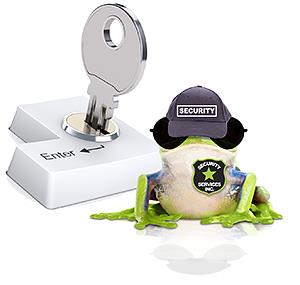January 2016: Are you tired of usernames and passwords? You’re not the only one! Passwords are painfully passé — and risky. Fortunately, some new, more secure, more convenient options are coming down the IT pipeline, including something called a Trusted Platform Module, or TPM.
TPM is a chip with a unique code that’s embedded in a device like your computer or phone. In fact, you may already have a TPM chip and not even know it. But you’ll probably be using it soon — here’s why:
How TPM works
TPM is hardware-based security (a chip) that works in conjunction with software-based security. When requested, the chip generates a code — called a cryptographic hash, or “crypto” in tech speak — that’s always unique based on the device. The code acts as a kind of digital signature. Hackers cannot interpret the crypto without the original device. When the unique code on the TPM is one of the factors needed to grant access to something — like an account or a network — private data becomes exponentially more secure. It works even if the device with the TPM is stolen because tampering with the device, such as trying to use a password cracker, removing the hard disk or installing a new operating system, resets the TPM and it has to be re-certified before being able to generate new trusted codes.
How TPM is being used now
Currently, TPM technology is in credit cards, payment systems and by Windows operating systems in some computers. The chips are standard on most enterprise-level PCs and laptops. On computers with TPM, Windows uses it to encrypt your entire disk in conjunction with BitLocker software. The technology has actually been around for years, sitting quietly in the background, waiting to be used to its fullest potential.
How TPM will be used soon
TPM chips will help pave the way for an internet of things that’s a lot more secure. It’s an excellent option for:
- Smart homes
- Timesheets and attendance logs
- Airline security and boarding passes
- Passport authentication
- Remote access
Imagine a system that knows you’re you just because you show up? TPM 2.0 can be used to do that and more. The possibilities for thwarting cybercriminals and preventing fraud are too many to count.
How TPM could change the way you log in
Many experts think that technology like TPM is the key (pun intended) to leaping away from the outdated, easily stolen username/password combination you’ve been using since you started typing on a computer keyboard. Along with multi-factor authentication, solutions like TPM “triangulation” keeps users a few steps ahead of the hackers.
At Leapfrog, our brainiac frogs always have their big eyes on potential IT advancements. The Solutions Task Force tests the ones they think might help clients, either in the Leapfrog Lab or on the Leapfrog network. The Task Force is not easily impressed so if it awards the new technology a good grade, the technology has earned it! Frogs think TPM will be one of these technologies and look forward to helping clients put it to good use.
| You may also be interested in: |

